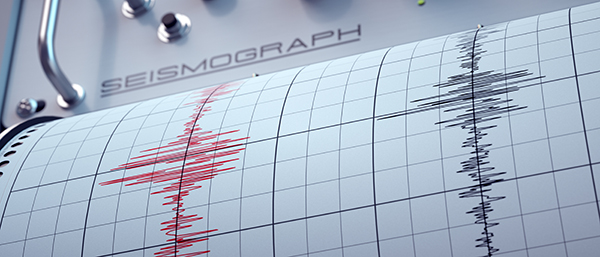
The Japanese government has issued an unsettling warning: there is an 80 percent chance of a magnitude 9 earthquake striking the Nankai Trough off Japan's Pacific coast within the next three decades.
This impending megaquake could result in up to 300,000 fatalities, primarily from tsunami waves reaching heights of 34 meters, and cause $1.44 trillion in damage. The disaster would displace 12.3 million people, approximately 10 percent of Japan's population, and destroy 2.35 million buildings.
The Nankai Trough: A seismic time bomb
The Nankai Trough, a 600-mile (900 km) deep ocean trench, is a region where the Philippine Sea Plate is subducting beneath the Eurasian Plate. This tectonic boundary has historically produced megaquakes every 100 to 200 years. The last major event occurred in 1946, making the region overdue for another significant tremor. The Japanese government's latest estimates, updated for the first time since 2013, account for inflationary pressures and advanced topographical data, which have expanded the anticipated flood areas.
In the worst-case scenario, the earthquake would trigger tsunami waves exceeding 30 meters in height, particularly affecting cities like Kuroshio and Tosashimizu in Kochi Prefecture. These waves would inundate vast areas, causing extensive flooding and destruction. Tokyo and 12 other prefectures along the southeast coast would face waves up to 10 meters tall, leading to widespread damage and loss of life.
The report projects that 215,000 deaths would be caused by the tsunami, 73,000 by building collapses, and 8,700 in fires. Additionally, post-disaster deaths from disease and exposure could range from 26,000 to 52,000, a figure 13 times higher than the post-disaster deaths following the 2011 Tohoku earthquake.
Preparedness and mitigation efforts
Despite improvements in building requirements and flood defenses since 2013, the estimated death toll has only slightly decreased. The government's goal of reducing fatalities by 80 percent, as outlined in the 2014 basic plan for disaster prevention, remains unmet. The latest report highlights the need for major revisions in evacuation strategies and infrastructure improvements.
Efforts to mitigate the impact include the designation of additional priority areas based on expanded flood risk zones and the development of a new national resilience plan for the coming years. A new agency for disaster prevention will also be established in 2026 to accelerate these initiatives.
Lessons learned from past quakes
The 2011 Tohoku earthquake, a magnitude 9 event, killed over 15,500 people and caused the meltdown of three nuclear reactors at the Fukushima Daiichi power plant. The tsunami waves reached heights of up to 40 meters in some areas, causing widespread destruction and environmental contamination. The Nankai Trough megaquake could be even more devastating, with the potential to surpass the 2011 disaster in both scale and impact.
The economic toll of a Nankai Trough megaquake is estimated at 270.3 trillion yen ($1.81 trillion), nearly half of Japan's total GDP. This figure is a significant increase from the previous estimate of 214.2 trillion yen, reflecting the updated terrain and ground data. The destruction of 2.35 million buildings and the displacement of 12.3 million people would have far-reaching economic consequences, affecting industries, infrastructure, and the overall stability of the country.
The government's report emphasizes the importance of individual and community preparedness. Swift evacuation is crucial, with the assumption that only 20 percent of people would evacuate immediately. Increasing this rate to 70 percent could reduce the tsunami death toll to 94,000, underscoring the critical role of public awareness and emergency response training.
The potential for a megaquake in the Nankai Trough has global implications, particularly for countries in the Pacific Ring of Fire. The disaster could disrupt international trade, affect global supply chains, and require significant international aid and support. The Japanese government's efforts to mitigate the impact and prepare for the worst-case scenario can serve as a model for other earthquake-prone regions.
The looming threat of a Nankai Trough megaquake underscores the urgent need for comprehensive disaster preparedness and mitigation strategies. While the Japanese government has made strides in improving building standards and flood defenses, the projected death toll and economic impact highlight the ongoing challenges. As the country braces for this potential catastrophe, the focus must remain on enhancing evacuation procedures, infrastructure resilience, and public awareness to minimize the human and economic toll of this impending disaster.
Sources for this article include:
DailyMail.co.uk
Reuters.com
KyodoNews.net
Source link

